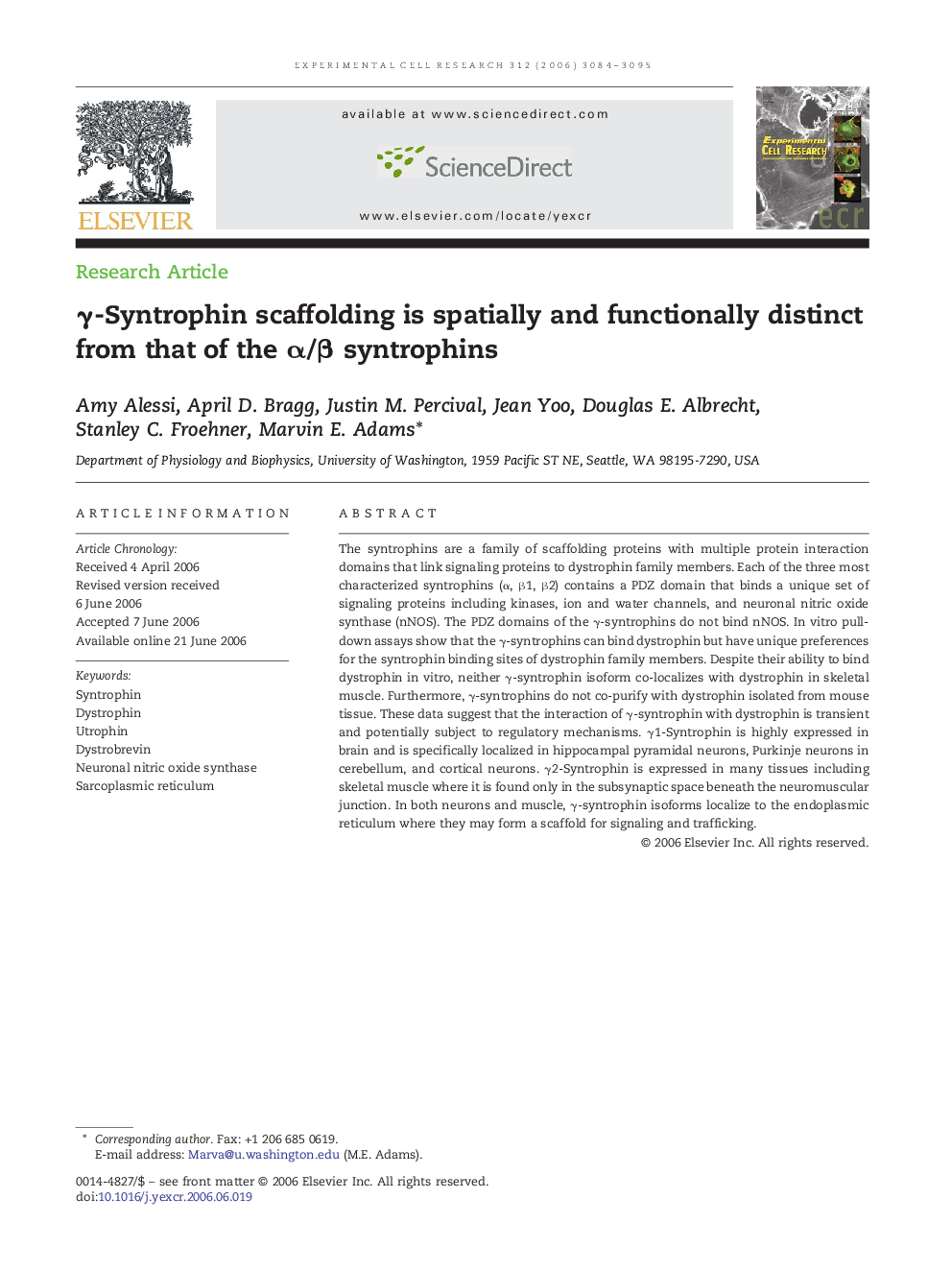| Article ID | Journal | Published Year | Pages | File Type |
|---|---|---|---|---|
| 2132433 | Experimental Cell Research | 2006 | 12 Pages |
The syntrophins are a family of scaffolding proteins with multiple protein interaction domains that link signaling proteins to dystrophin family members. Each of the three most characterized syntrophins (α, β1, β2) contains a PDZ domain that binds a unique set of signaling proteins including kinases, ion and water channels, and neuronal nitric oxide synthase (nNOS). The PDZ domains of the γ-syntrophins do not bind nNOS. In vitro pull-down assays show that the γ-syntrophins can bind dystrophin but have unique preferences for the syntrophin binding sites of dystrophin family members. Despite their ability to bind dystrophin in vitro, neither γ-syntrophin isoform co-localizes with dystrophin in skeletal muscle. Furthermore, γ-syntrophins do not co-purify with dystrophin isolated from mouse tissue. These data suggest that the interaction of γ-syntrophin with dystrophin is transient and potentially subject to regulatory mechanisms. γ1-Syntrophin is highly expressed in brain and is specifically localized in hippocampal pyramidal neurons, Purkinje neurons in cerebellum, and cortical neurons. γ2-Syntrophin is expressed in many tissues including skeletal muscle where it is found only in the subsynaptic space beneath the neuromuscular junction. In both neurons and muscle, γ-syntrophin isoforms localize to the endoplasmic reticulum where they may form a scaffold for signaling and trafficking.
